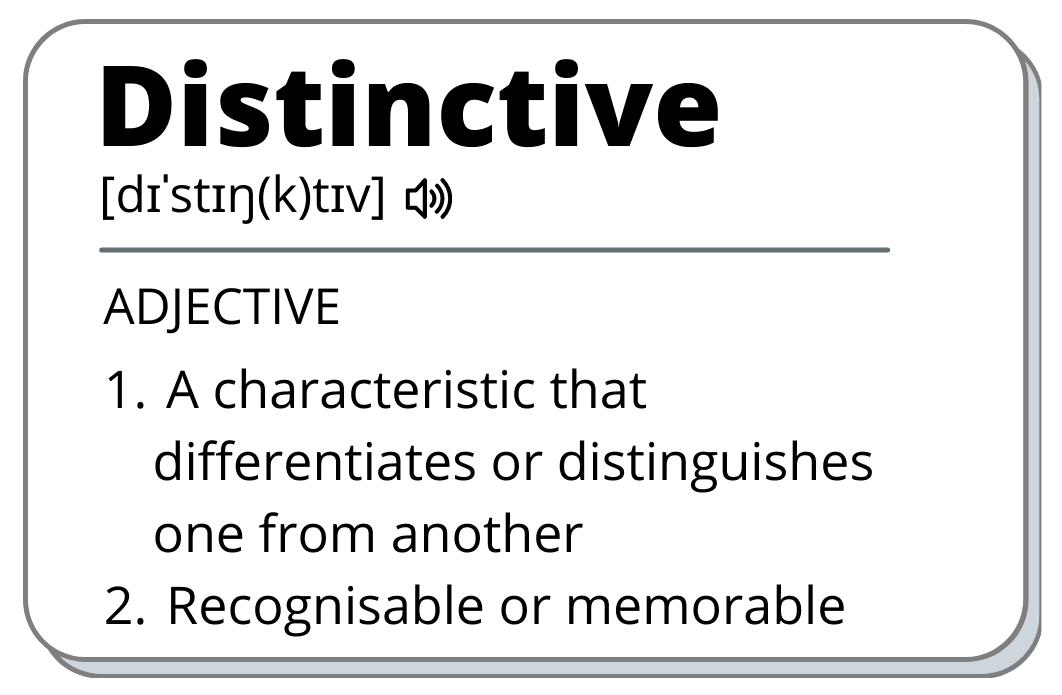Exploring ‘distinctiveness’ as a driver of brand growth
Today’s brands understand that competition is rife. Vying for sales and customer loyalty is increasingly challenging. But when overwhelmed by choice, and often in increasingly saturated markets, consumers are looking for something in particular.

The fact is if your brand doesn’t stand out – if there’s nothing in particular that sets you apart from your competitors – you will struggle to fight through all the noise. Without a strong identity, your brand will struggle to grow.
The fastest-growing brands have something special about them – something about them is different. We’re talking brand ‘distinctiveness’. As a key driver of brand growth, (Vision One Brand Growth Study 2021) distinctiveness can elevate your brand’s reputation, provide the perfect reason to buy and nurture brand loyalty.
But what does it really mean to be distinctive? What does a distinctive brand look like? And how can we measure how distinctive a brand is?
Rethinking what it means to be unique
Distinctive brands stand out. There’s a uniqueness about them. But with brands so quick to emulate top-selling competitor features, or the latest designs and trends, can any brand be said to be truly unique?
The fact is, you don’t have to be the ‘only one’ to be regarded as unique.
Even in markets where the products themselves are standardised (or virtually identical), distinctive brands succeed in finding their own uniqueness. Consumers can tell them apart and differentiate them from their competitors. Distinctive brands are not like everyone else – in fact, they strive to be anything but.
They are recognisable. They are memorable. They are different.
But what is it that sets them apart?
The importance of visual identity
Distinctive brands often have a highly recognisable brand identity. Visually, something about them makes them different or easy to recognise.
Maybe their brand colours are particularly bold
It could be their strapline or jingle
Perhaps their logo is unusual, eye-catching or particularly clever
It might be the shape of the packaging – or their visible range
Maybe they are just the brand that’s most prevalent – the one you see, everywhere you turn
Standing out visually is important. It’s about being memorable. And when a consumer can remember what your brand looks like, the decision to buy is more straightforward. Surrounded by choice, there’s comfort in recognition. Spotting the brand you know, or the one you recognise, feels reassuring – and it saves time.
It’s about making it as easy as possible for your target market to choose you.
But distinctiveness isn’t just about how easily your brand can be differentiated visually. Brands can signal that they are different and unique in other ways.
Distinctive by reputation
The most successful, fastest-growing brands are known for something. A particular characteristic differentiates them. Yes, they may have a strong visual identity too – but there’s something about their product or service that enables them to own a unique place in their customers’ mind.
- Think Nike – known for its iconic swoosh, but also for inspiring self-empowerment.
- Apple – yes, an easily recognisable logo, but also strongly associated with creativity, innovation and design.
- Tinder – fun and easy to use, it’s probably best known for reversing the stigma and taboo surrounding online dating by pioneering its game-like ‘swipe’
Distinctiveness often stems from reputation. What is your brand known for?

Perhaps more revealing to explore, reputation implies consumers have discovered your brand and associate you with something. Rather than just recognising what your brand looks like, they have formed an opinion about what you stand for.
Consumers know what sets a distinctive brand apart. They are able to understand and distinguish what makes them different from other brands within their market. Often perceived as leaders (using their uniqueness to elevate their market position), distinctive brands spark recognition and familiarity – they give consumers a reason to develop a preference.
Can we measure how distinctive a brand is?
Yes. Tracking brand fame (also known as brand preference) can be a great indicator of how distinctive your brand is – the more distinctive consumers perceive you to be, the higher your Brand Fame score will be. And it’s one of the key metrics that we measure as part of our market-leading BrandVision brand tracking service.
As a measure of brand distinctiveness, Brand Fame indicates two things:
Brands that aren’t perceived to be either will struggle to grow – they have nothing to set them apart from their competitors. In effect, they are seen by consumers to be characterless rather than distinctive.
Tracking Brand Fame reveals where your brand sits in consumers’ minds over time. Higher scores imply your brand has greater appeal and interest – it correlates with increased trust and Brand Loyalty. It implies preference.
It’s a fantastic measurement to track as it can reveal the impact of advertising campaigns, a competitor’s product launch or a shift in consumer trends or needs. Spot a downturn in your Brand Fame and it’s time to take action – fast.
Latest News
Keep up to date with the latest news from Vision One.